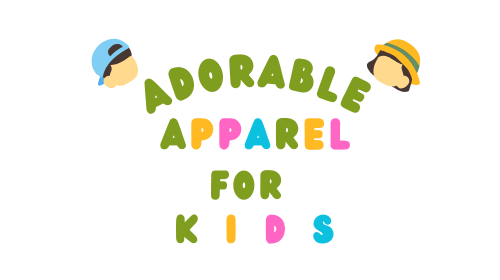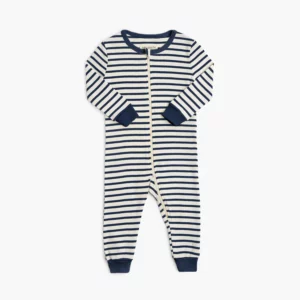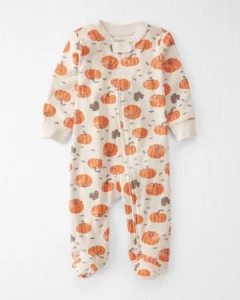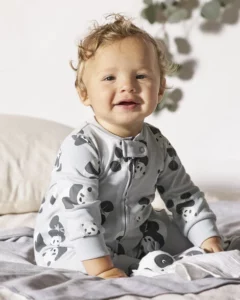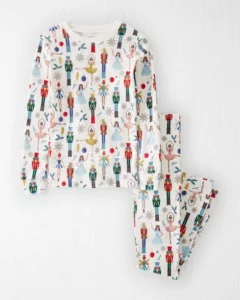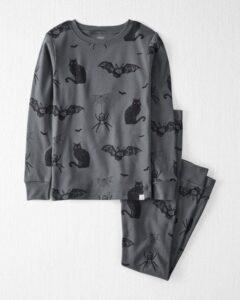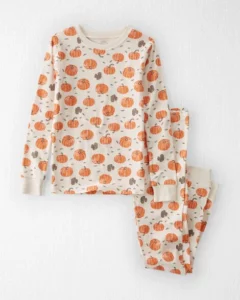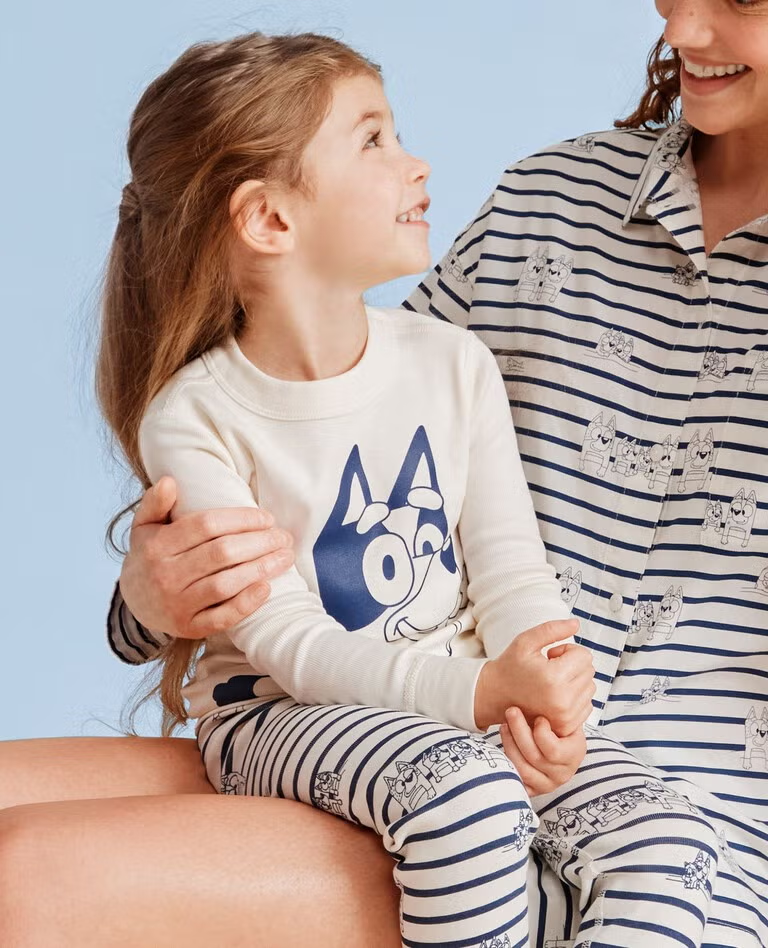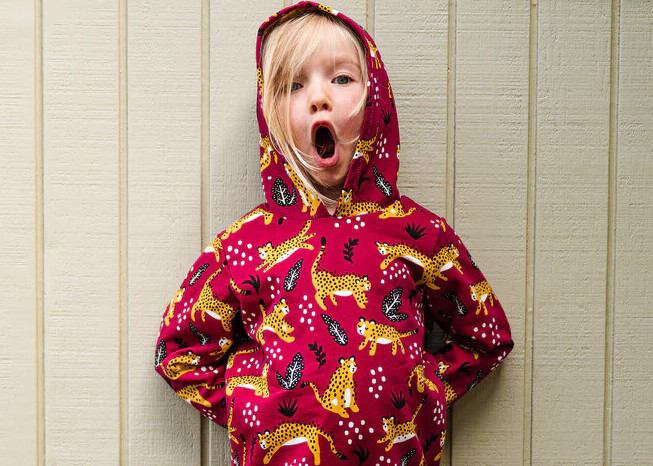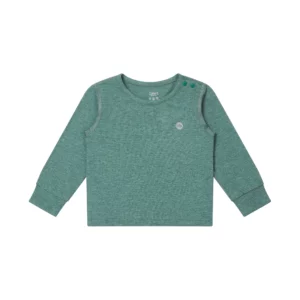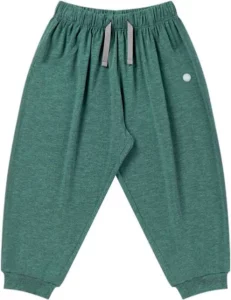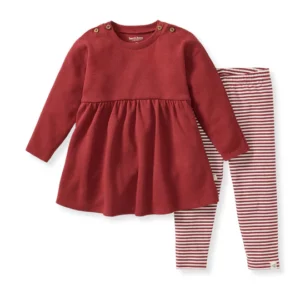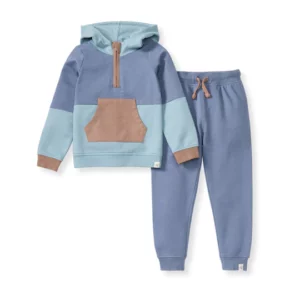Organic kids’ clothing is changing sustainable fashion. It uses eco-friendly materials grown without harmful chemicals. Think organic cotton instead of pesticide-heavy cotton—a small switch with a big impact.
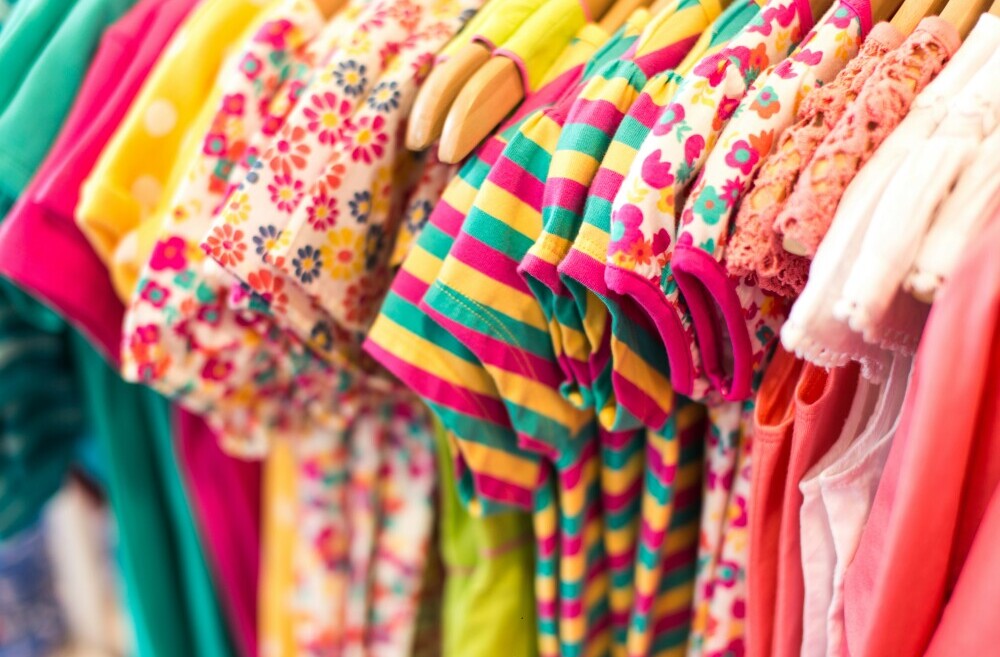
Parents are embracing this trend, and it’s more than a fad. These clothes keep kids comfy while protecting the planet. Sustainable is the buzzword, and organic kids’ wear is leading the way.
Why should you care? Choosing organic clothing for kids lowers your carbon footprint, supports healthy soil, and reduces pollution. Fewer pesticides also mean cleaner water and healthier land.
There’s a health bonus, too. Organic fabrics are softer and gentler on a child’s sensitive skin. With no harsh chemicals, there’s less chance of irritation—a win for kids and the planet.
The Environmental Impact of Conventional Clothing vs. Organic Alternatives
The clothing industry significantly contributes to carbon emissions and resource waste. Traditional production uses excessive water, harmful chemicals, and energy, leaving a heavy environmental footprint.
Here are some pros and cons to conventional clothing vs. organic alternatives:
Organic Clothing – Pros
- Lower Environmental Impact: Organic farming avoids synthetic chemicals, using natural methods that are gentler on the earth.
- Water Conservation: Organic cotton production prioritizes efficient water use, helping reduce waste.
- Healthier Ecosystems: Without toxic runoff, soil and water remain cleaner and more sustainable.
- Reduced Emissions: Eco-friendly practices result in a smaller carbon footprint overall.
Conventional Clothing – Cons
- High Carbon Emissions: Traditional production methods contribute significantly to greenhouse gas emissions.
- Excessive Water Use: Conventional cotton farming uses large amounts of water, leading to unnecessary waste.
- Chemical Pollution: Synthetic fertilizers, pesticides, and toxic dyes pollute soil and waterways.
- Environmental Degradation: The reliance on harsh chemicals and energy-heavy processes harms ecosystems.
Choosing organic alternatives is a step towards a more sustainable lifestyle. It’s more than just a fashion choice—it’s a way to actively reduce your carbon footprint and make a positive impact on the planet.
Recommended: Best Organic Cotton Baby Rompers For Sensitive Skin
Product Brand Recommendations
Mini Mioche
Mini Mioche is known for its ultra-soft, Canadian-made basics crafted from GOTS-certified organic cotton, with sustainable practices, non-toxic dyes, and a commitment to ethical, eco-conscious kidswear.
Dreamy Sleeper Romper
Wrap your little one in cloud-like comfort with the Dreamy Sleeper Romper in ‘Nautical Stripe.
A footless, ultra-soft one-piece crafted from 100% GOTS-certified organic cotton rib.
Thoughtfully made in Canada using gentle, non-toxic dyes and zero-plastic packaging, it features a two-way zip with a protective guard for smooth diaper changes, and its stretchy design grows with babies up to 6 years.
Cozy, safe, and sustainable—every detail shows love for both your child and the planet.
LOTS of colors to choose for boys and girl including ‘Nautical Stripe’ as shown.
Where To Buy: mini mioche
Another best seller in the mini mioche line of organic clothing is this French Terry Cozy Hoodie in ‘Blossom.’
Cozy Hoodie
Keep your little one cozy while making an eco-friendly choice.
This soft French Terry Hoody is made from 100% GOTS-certified organic cotton and dyed with non-toxic, AZO-free colors, making it safe for sensitive skin.
Locally made in Canada with ethical practices, it’s pre-shrunk for easy care and designed to last.
Why parents love it: A comfy everyday layer that supports sustainability and shrinks your family’s carbon footprint—without sacrificing style or quality.
Where To Buy: mini mioche
You can also get this cozy organic hoodie in ‘Thyme‘ as well as other colors for boys and girls.
Great color for the fall and pairs perfectly with any outfit.
Cozy Hoodie
Mini Mioche French Terry Lush Hoody:
Wrap your child in comfort (and style) with this French Terry Lush Hoody by Mini Mioche.
Crafted from 100% GOTS-certified organic cotton and dyed with non-toxic AZO-free colors, it’s soft and gentle on sensitive skin.
Made in Canada under ethical and sustainable practices, with pockets for little hands and a perfect mid-weight feel for layering.
A cozy, eco-friendly choice that parents can feel good about—and kids will want to wear.
Where To Buy: mini mioche
Carter’s
Where To Buy: Carter’s
Here is another organic cotton baby sleeper/pajamas in a cute ‘Panda Print.’
Wrap your baby in gentle comfort with these organic sleep-and-play pajamas.
Made from GOTS-certified organic cotton, they’re soft, breathable, and perfect for sensitive skin.
Thoughtfully designed with a two-way zipper for easy diaper changes and a cuddle tab to protect little chins.
Built-in footies keep tiny toes snug, making this one-piece as practical as it is cozy.
Where To Buy: Carter’s
Carter’s also makes 2-piece cozy organic cotton pajamas for kids in sizes 4 up to 14.
Kid Organic Cotton Pajamas in Nutcracker Print
Available in Sizes 4 to 14
Keep your little one comfy and festive in these Nutcracker-themed pajamas from Carter’s Little Planet collection.
Made from 100% certified organic cotton, they’re gentle on sensitive skin and perfect for holiday nights.
Features:
-
100% certified organic cotton, OEKO-TEX® and GOTS certified
-
Snug-fitting design with elastic waistband for comfort and safety
-
Long sleeves with soft ribbed cuffs
-
Machine washable for easy care
Perfect for bedtime or cozy mornings, these pajamas are a thoughtful, sustainable choice for your child’s wardrobe.
Where To Buy: Carter’s
You can also get these soft cozy pajamas in ‘Spooky Creatures‘ and ‘Harvest Pumpkins.’
Kid Organic Cotton Pajamas in Spooky Creatures Print
Shop On Carter’s
You can also get these adorable organic cotton pajamas in ‘Harvest Pumpkins‘ for kids.
Kid Organic Cotton Pajamas in Harvest Pumpkins
Shop On Carter’s
Another brand that also makes organic kids clothing is Hanna Andersson.
Hanna Andersson
Hanna Andersson is known for its durable, organic cotton kids’ clothing—especially cozy pajamas—featuring vibrant prints, ethical practices, and heirloom-quality designs parents trust.
Kids Bluey Long John Pajama Set
Cozy up bedtime with this ultra-soft Bluey Long John Pajama Set—crafted from 100% GOTS-certified organic combed cotton rib knit and featuring a playful all-over Bluey print.
It includes flatlock seams for itch-free comfort, an encased elastic waistband with foldable cuffs for lasting fit, and meets OEKO-TEX® Standard 100 safety standards.
Durable, stylish, and gentle on sensitive skin—these jammies make sleepytime fun and worry-free.
Where To Buy: Hanna Andersson
The Innovative Materials Behind Organic Clothing for Kids
Switching gears to what goes into making these eco-friendly clothes, organic kids clothing often features some pretty cool materials. These aren’t your everyday fabrics—they’re specially chosen for their environmental benefits.
Organic Cotton
Think of organic cotton as the gentle hug of fabrics. It’s grown without harsh chemicals, keeping soil and water clean. Soft, breathable, and safe for little ones—what’s not to love?
Here are some BEST SELLERS from Nest Designs.
Bamboo Basics Long Sleeve T-Shirt
Keep their days comfy and cozy with this Basics Long Sleeve T-Shirt in Misty Moss.
Made from ultra-soft GOTS-certified organic cotton, it’s non-toxic, breathable, and gentle on sensitive skin.
Snap closures at the shoulder make dressing a breeze, while its versatile design pairs perfectly with any outfit.
-
Made from GOTS-certified organic cotton – soft, safe, and eco-friendly
-
Gentle on sensitive skin – breathable and non-toxic
-
Snap closures at the shoulder – easy on and off for busy mornings
-
Simple, versatile style – pairs effortlessly with leggings, pants, or skirts
-
Designed for everyday comfort – perfect for play or layering
Soft on skin, strong on style—this Misty Moss long sleeve is the everyday essential your little one will love!
Available in different sizes and colors.
Where To Buy: Nest Designs
Bamboo Cotton Basics Harem Pants
Available In Sizes for Kids Aged 12 months up to 10 Years
Keep your little one cozy and free to move with these ultra-soft bamboo-cotton harem pants, designed for everyday comfort and play.
✨ Key Features:
-
Made with a breathable bamboo-cotton blend that feels gentle on sensitive skin
-
Loose, relaxed fit for maximum comfort and movement
-
Elastic waistband makes dressing quick and easy
-
Durable yet soft fabric perfect for active toddlers
-
Versatile design pairs effortlessly with any top
These harem pants are the perfect blend of comfort, durability, and style—making them a must-have staple for your toddler’s everyday wardrobe.
Available in different sizes and colors.
Where To Buy: Nest Designs
Burt’s Bees Baby is another brand known for making organic cotton clothing for kids.
Burt’s Bees Baby
Burt’s Bees Baby is known for soft, affordable organic kids’ clothing made from 100% GOTS-certified cotton that’s gentle on sensitive skin.
Let’s take a look at some NEW arrivals.
Thermal Organic Girl Tunic & Pants Set
Keep your toddler cozy, stylish, and eco-friendly with this adorable organic tunic and pants set.
Key Features At A Glance
-
Organic comfort: 100% organic cotton tunic, soft leggings with stretch
-
Warm & cozy: Thermal fabric keeps your toddler snug all day
-
Easy dressing: Button placket for quick on-and-off changes
-
Stylish details: Dolman sleeves and tunic length for a trendy fit
-
Sustainable choice: Made with eco-friendly organic fabrics
This set is the perfect blend of comfort, style, and sustainability—great for parents who want their little ones cozy and cute while making an earth-friendly choice!
Where To Buy: burt’s bees BABY
Color Blocked Sweatshirt & Pants Set
Cozy, stylish, and perfect for active little ones—this color-blocked sweatshirt and jogger set delivers on comfort and cuteness.
Key Features:
-
100% organic cotton French terry for soft, breathable wear
-
Color-block sweatshirt with a quarter-zip and zipper guard—great for layering
-
Functional drawstring joggers for adjustable comfort all day long
An eco-conscious pick that blends everyday practicality with sweet toddler style—this set is a win-win for parents and busy little bees alike!
Where To Buy: Burt’s Bees Baby
Bamboo
Bamboo is the overachiever of the group—it shoots up fast and doesn’t need much to thrive. The fabric is silky soft, naturally antibacterial, and tough enough for endless playdates.
Hemp
Hemp is the wise old soul of sustainable fabrics. It grows with hardly any resources, lasts forever, and even gets softer every time you wash it. Eco-friendly and parent-approved!
Using these fabrics in kids’ clothes reduces environmental impact and avoids harmful chemicals. It’s like wrapping your child in a safe, planet-friendly hug.
Each material shows a step toward healthier, sustainable fashion. Choosing them supports better fabrics that could shape the future.
Choosing Organic Clothing: Making Responsible Consumer Choices
Finding organic kids’ clothes can feel tricky, but labels help. Look for certifications like GOTS or OEKO-TEX to ensure safety and sustainability.
Organic clothing is an investment in quality and durability. It may cost more upfront but lasts longer, saving money and resources.
Check how transparent brands are. Many now share details about fair labor and eco-friendly practices—support the ones that match your values.
Buying organic also teaches kids eco-conscious habits. You’re not just dressing them—you’re showing them how to live sustainably.
Small choices add up. Choosing organic today helps build a healthier, greener tomorrow for future generations.
